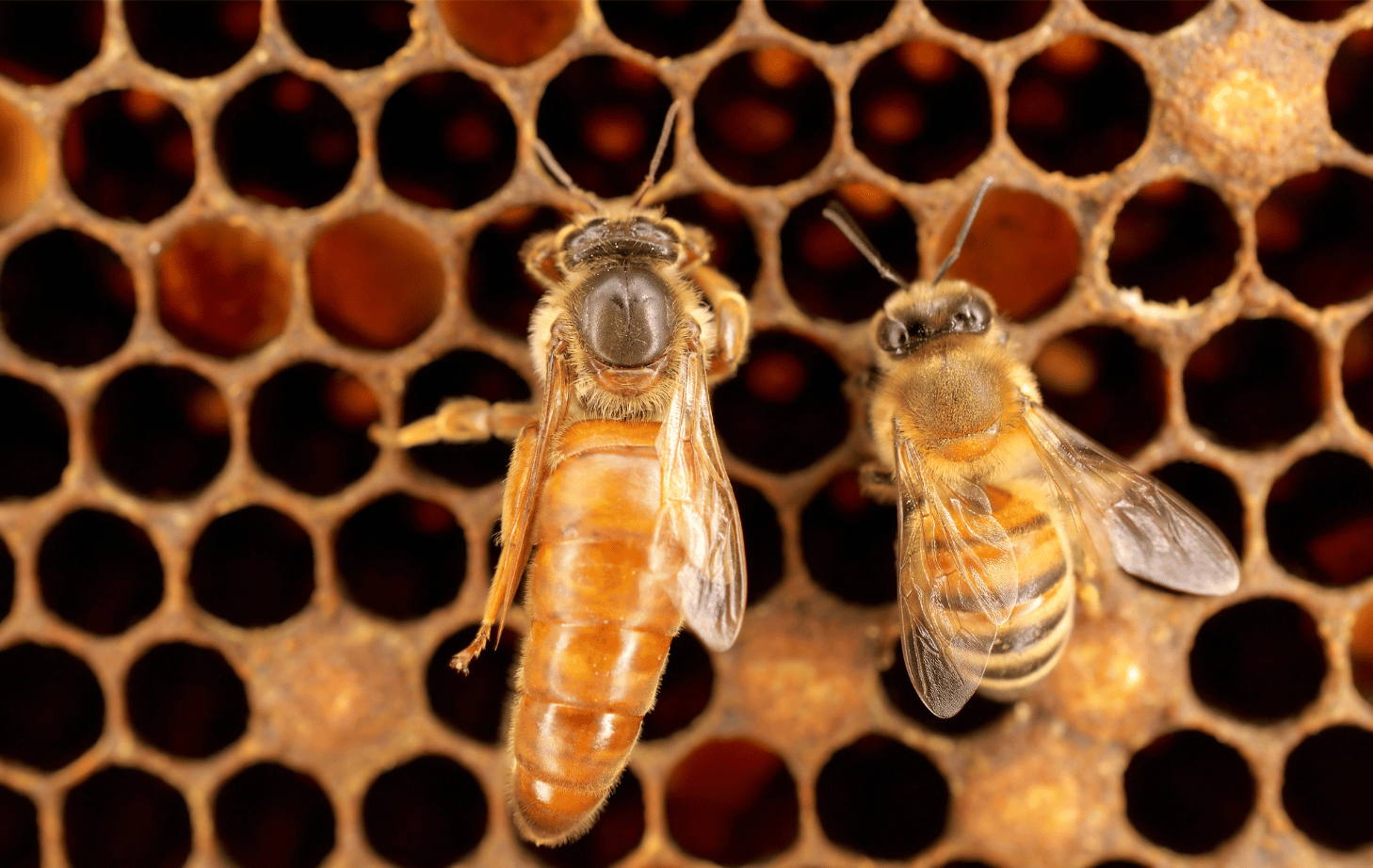
The Lifecycle of a Honeybee: From a Queens Egg to Honey
Honeybees, those industrious and essential pollinators, undergo a remarkable lifecycle that spans distinct stages. From the moment a queen lays her eggs, to the bustling activity within a hive, and finally, the production of the sweet nectar we know as honey – each phase is crucial to the survival and success of the colony. In this article, we'll explore the intricate journey of a honeybee from egg to honey, breaking down the lifecycle into its fascinating stages.
Stage 1: Egg-Laying by the Queen Bee
The lifecycle of a honeybee begins with the queen bee, the sole fertile female in a hive. The queen's primary role is to lay eggs, and she does so with astounding precision. Fertilized eggs become female worker bees, while unfertilized eggs develop into male drones. The queen carefully selects the size of the cell in which she lays each egg, determining the fate and role of the bee that will emerge.
Stage 2: Hatching of Larvae
Once the eggs are laid, they hatch into larvae. Worker bees diligently attend to the larvae, feeding them a mixture of royal jelly and honey. The royal jelly is a special substance secreted by the worker bees, reserved exclusively for the larvae that will become queens. This nutritious diet propels the development of the larvae, and they undergo several molting stages, gradually transforming into pupae.
Stage 3: Pupation and the Emergence of Adult Bees
As the larvae spin protective silk cocoons around themselves, they enter the pupal stage. Within these cocoons, metamorphosis takes place, and the body structures of the bees undergo significant changes. Adult bees eventually emerge, and their roles within the hive become apparent. Worker bees, the smallest and most numerous, assume various responsibilities like foraging, nursing, and hive maintenance. Drones, larger but fewer in number, are primarily responsible for mating with new queens.
Stage 4: Life as a Worker Bee or Drone
Worker bees, the backbone of the hive, engage in numerous tasks throughout their relatively short lives. They progress through different roles, from nursing to guarding the hive and foraging for nectar and pollen. Drones, on the other hand, exist solely for mating, and their presence is crucial for genetic diversity within the colony. However, as winter approaches, drones are often expelled from the hive as they are no longer needed.
Stage 5: The Queen's Reign and Mating Flight
The queen bee plays a vital role in maintaining the colony's harmony. She embarks on one or more mating flights early in her life, during which she mates with multiple drones. The stored sperm from these flights allows her to lay fertilized eggs throughout her life, sustaining the hive's population. The queen can live for several years, but worker bees often replace her if her egg-laying capacity declines.
Stage 6: Nectar Collection and Honey Production
The final stage of the honeybee lifecycle involves the collection of nectar and the production of honey. Worker bees forage for nectar from flowers, using their proboscis to extract the sweet liquid. Upon returning to the hive, they pass the nectar to other worker bees through a process of regurgitation and ingestion. Enzymes in the bees' stomachs break down complex sugars into simpler forms. The bees then spread the modified nectar in honeycomb cells, and through the process of fanning their wings, they dehydrate the substance, transforming it into honey.
The Importance of the Honeybee
The lifecycle of a honeybee is a testament to the intricacies of nature, showcasing the interdependence and efficiency of these incredible insects. From the moment a queen lays her eggs to the production of honey, each stage plays a vital role in ensuring the survival and prosperity of the hive. As we marvel at the honey jars on our tables, it's worth remembering the complex journey these bees undertake to provide us with this golden, liquid delight.
Interested in Learning Beekeeping?
Call Tina and schedule and introduction to beekeeping course today!
